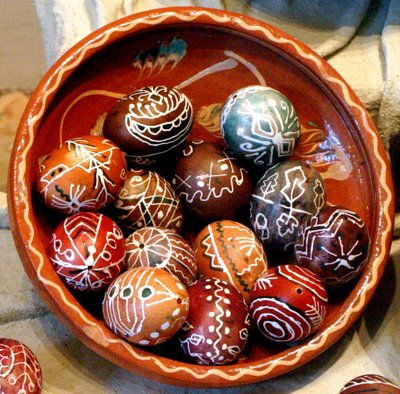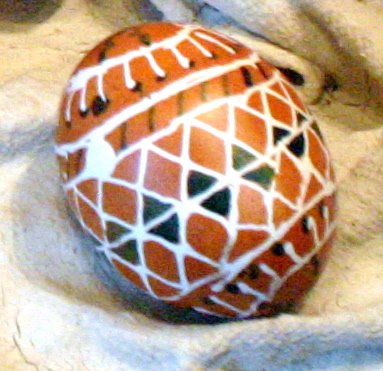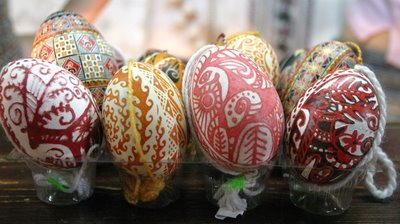Has anyone else noted problems with waxing on brown eggs? I noticed that the wax sticks well to the bare shell, but if I dye and try to make a three-color egg, I get loss. The wax comes off of new lines, but not from areas I've colored in between old lines.
It happened with this egg:

(This is a light brown egg; the color balance in this photo does not show this well.)
Note the loss of red in the sinuous line that surrounds the central motif.
Initially I thought it was just an isolated problem, due to a bad egg, but then I noticed it on a few more of my pysanky. And when I took a closer look at the photo I had copied this pattern from, I noted the same sort of defect - loss of the curved red lines.
Any ideas?
I've since avoided the problem by only using the second color (after the brown base) as either the final color, or to fill in areas already outlined, as in this pysanka:





